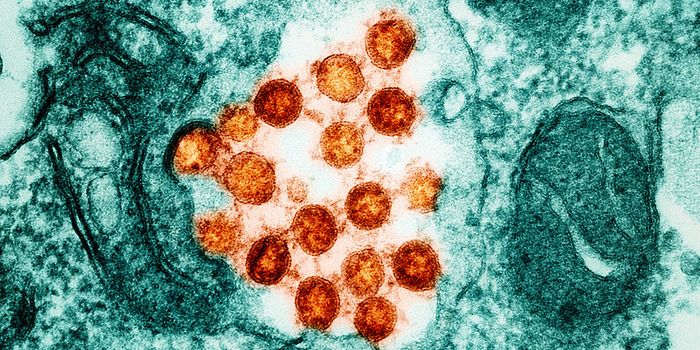Ticks are nasty creatures that already pose a threat to human health; now the Centers for Disease Control and Prevention are warning of another disease transmitted by these parasites. It’s a virus called Powassan, and so far it’s been a rare occurrence, but it does have the potential to be fatal. There is also a possibility of a record-breaking tick population this summer. Learn more from the following video.
"Tickborne diseases are on the rise, and prevention should be on everyone's mind, particularly during the spring and summer, and early fall when ticks are most active," said Rebecca Eisen, who is a research biologist in the division of vector-borne diseases at the CDC.
Laura Goodman, a senior research associate in population medicine and diagnostic sciences at Cornell University, agrees with the warning. "It's going to be a bad season," she said.
Around 75 cases of Powassan disease were reported in the United States in the past decade. The CDC reports that the majority of cases have happened in the Northeast and Great Lakes region. Although rare, Goodman stressed that Powassan has been spreading and more cases are likely.
The best way to prevent the disease is to avoid ticks, and check for them after spending time outdoors. The symptoms of the virus may include weakness, headache, fever, confusion, vomiting, seizures and memory loss. If encephalitis, brain inflammation, occurs the rate of fatality is ten percent, and there is a risk of long-term neurological damage as well.
Unfortunately there is no treatment for the disease at this time, and doctors have to simply try and manage the symptoms and complications. Those that come down with severe cases of Powassan must usually be hospitalized so that they can get therapeutics intravenously, have respiratory support administered, or receive medications to reduce brain swelling.
A milder winter in the Northeast has researchers especially concerned; a dramatic increase in the tick population is now expected in that region and possibly around the entire northern United States.
Eisen explained that "the ability of ticks to survive and reproduce also is influenced by temperature and precipitation. Other factors include, but are not limited to, availability of hosts and suitable habitat, such as wooded or brushy vegetation."
Ticks that can spread disease have expanded their range; they are now being found in areas they were not observed 20 years ago, she said.
It’s also recommended that you shower as soon as possible after potential exposure. Wash clothes in hot water, or you can put dry clothes into a dryer on high heat for ten minutes, longer to compensate if they are wet, in order to kill ticks that may remain on clothes. If you can’t dry the clothes on high, tumble on low for 90 minutes to kill ticks.
Related: Researchers Discuss Vector-borne Viral Diseases
"It's especially important to take steps to protect yourself and your loved ones, including pets, from ticks during this season, as well as any time during the warmer months when you're outside," Eisen said.
Learn more about ticks and tickborne disease here at the CDC. Check out the video above from the Mayo Clinic on tick avoidance.
-
MAY 07, 2024Is It Anti-RNP or Anti-Sm/RNP?
- See More
-
APR 30, 2024Immuno-Oncology Virtual Event Series 2024
-
MAY 07, 20243rd International Biosecurity Virtual Symposium
-
MAY 23, 2024For the Love of Digital PCR 2024
- See More

















































